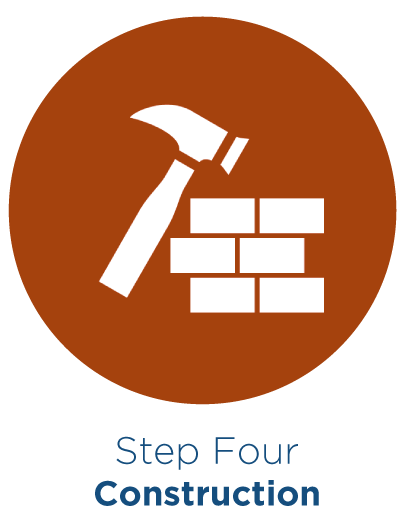How to Get Permits, Construct and Occupy/Rent Your Second Unit
Permits & Construction
How do you get permits to build your second unit? And, once you have your permits, what are the steps to build it and get it occupied or rented?
City Information
Learn more about ADU regulations in different cities.
Summary: Atherton’s ordinance has been preempted by the new state ADU laws that took effect on January 1st, 2020, pending adoption of a replacement local ordinance. For more information, please review the flyer on the new state laws and contact the planning department.
Summary: Belmont’s ordinance has been preempted by the new state ADU laws that took effect on January 1st, 2020, pending adoption of a replacement local ordinance. For more information, please review the flyer on the new state laws and contact the planning department.
Summary: Brisbane’s ordinance has been preempted by the new state ADU laws that took effect on January 1st, 2020, pending adoption of a replacement local ordinance. For more information, please review the flyer on the new state laws and contact the planning department.
Summary: Burlingame’s ordinance has been preempted by the new state ADU laws that took effect on January 1st, 2020, pending adoption of a replacement local ordinance. For more information, please review the flyer on the new state laws and contact the planning department.
Summary: Colma’s ordinance has been preempted by the new state ADU laws that took effect on January 1st, 2020, pending adoption of a replacement local ordinance. For more information, please review the flyer on the new state laws and contact the planning department.
Summary: Daly City’s ordinance has been preempted by the new state ADU laws that took effect on January 1st, 2020, pending adoption of a replacement local ordinance. For more information, please review the flyer on the new state laws and contact the planning department.
Summary: East Palo Alto’s ordinance has been preempted by the new state ADU laws that took effect on January 1st, 2020, pending adoption of a replacement local ordinance. For more information, please review the flyer on the new state laws and contact the planning department.
Summary: Foster City’s ordinance has been preempted by the new state ADU laws that took effect on January 1st, 2020, pending adoption of a replacement local ordinance. For more information, please review the flyer on the new state laws and contact the planning department.
Summary: Half Moon Bay is in the process of updating their ADU ordinance. The City is located entirely within the California Coastal Zone and as such, some of the State requirements do not apply. Please contact the Community Development Department for more information on their ADU rules.
Summary: ADUs can be built in all residential areas. There is no minimum required lot size. Maximum ADU size is 1,400 square feet. Parking is required unless state exemptions are met. Hillsborough reports they are taking steps to actively promote and encourage the construction of ADUs.
Summary: Menlo Park’s ordinance has been preempted by the new state ADU laws that took effect on January 1st, 2020, pending adoption of a replacement local ordinance. For more information, please review the flyer on the new state laws and contact the planning department.
Summary: Millbrae does not have an ordinance governing ADUs, so state law applies. ADUs can be built in all residential zones. There is no minimum required lot size and the maximum ADU size is 1,200 square feet but not to exceed 50% of the primary dwelling if attached.
Summary: ADUs can be built in all residential areas with a single-family dwelling. There is no minimum required lot size. Maximum ADU size is 1,200 square feet; for attached ADUs the primary dwelling must be at least 850 square feet and the ADU cannot exceed 50% of the primary dwelling. Parking is required unless state exemptions are met.
Summary: Summary: Portola Valley’s ordinance has been preempted by the new state ADU laws that took effect on January 1st, 2020, pending adoption of a replacement local ordinance. For more information, please review the flyer on the new state laws and contact the planning department. Portola Valley may in some cases have rules more permissive than those required under state law.
Summary: Redwood City’s ordinance has been preempted by the new state ADU laws that took effect on January 1st, 2020, pending adoption of a replacement local ordinance. For more information, please review the flyer on the new state laws and contact the planning department.
Summary: San Bruno’s ordinance has been preempted by the new state ADU laws that took effect on January 1st, 2020, pending adoption of a replacement local ordinance. For more information, please review the flyer on the new state laws and contact the planning department.
Summary: San Carlos’ ordinance has been preempted by the new state ADU laws that took effect on January 1st, 2020, pending adoption of a replacement local ordinance. For more information, please review the flyer on the new state laws and contact the planning department.
Summary: The City of San Mateo’s ordinance has been preempted by the new state ADU laws that took effect on January 1st, 2020, pending adoption of a replacement local ordinance. For more information, please review the flyer on the new state laws and contact the planning department.
Summary: The County of San Mateo’s ordinance has been preempted by the new state ADU laws that took effect on January 1st, 2020, outside of the coastal zone, pending adoption of a replacement local ordinance. For more information, please review the flyer on the new state laws and contact the planning department. Please note that rules have not necessarily changed for ADUs located within the coastal zone.
Summary: South San Francisco’s ordinance has been preempted by the new state ADU laws that took effect on January 1st, 2020, pending adoption of a replacement local ordinance. For more information, please review the flyer on the new state laws and contact the planning department.
Summary: Woodside’s ordinance has been preempted by the new state ADU laws that took effect on January 1st, 2020, pending adoption of a replacement local ordinance. For more information, please review the flyer on the new state laws and contact the planning department. Please note that in some cases, Woodside’s rules may be more permissive than the requirements of state law.
Also check out Symbium BUILD, which allows you to see if your property is eligible for an ADU.


This brochure can help you explain them.

Planning, zoning, and building regulations ensure homes and other buildings are functional, environmentally friendly, and safe places to live and work. If you reviewed your project with city staff before you filed your permit application and incorporated their early recommendations into your plans, your permits can be issued quickly.


These construction methods may save you some money and time, but they can also involve some unique costs, such as trucking, crane costs and sales tax. Builders with experience in factory-built homes can help you decide if they are a good fit for your project.
Inspections: During construction, your second unit will be inspected multiple times to ensure it is being built according to the permitted plans. Inspectors also verify the contractor is complying with building, plumbing, mechanical and electrical codes. Other departments or agencies, such as fire, water or public works, may also conduct their own inspections.
Your contractor will generally schedule all required inspections, but ultimately inspections are your responsibility. You should always check the building permit, which must be posted on site, to ensure the required inspections have been performed in the correct order.
When all the work is complete, a building inspector will conduct a final inspection. Upon approval, you will receive a Certificate of Occupancy and possibly a registration letter for your new second unit.
Then it’s time to move in!

- Use a written rental application
- Develop written, fair criteria you will use to judge all applicants and apply the criteria consistently with all applicants
- Do a credit check
- Require and talk to references
- Use a decision-making process that is simple, legal and fair
San Mateo County provides funding for Project Sentinel to help people learn to be responsible landlords, including the proper handling of security deposits. Project Sentinel – Tenant/Landlord Assistance
Set your rent: A good starting place is to research what others currently charge for similar units in the area. You can also use our calculator to see rents in your area for similarly sized units.
Find a tenant: There are many places where you can advertise for a tenant. You can also ask friends and acquaintances if they know of anyone who is looking for a place to rent. There are also for profit and local non-profit agencies that can assist in finding tenants. HIP housing has a Home Sharing program where they match two or more unrelated people. You can find out more in this flyer or at: http://hiphousing.org/programs/home-sharing-program/
Consider getting paid to help others: The Housing Authority manages a variety of housing subsidy programs to support elderly, persons with disabilities, and low-wage earners to secure stable housing and increase self-sufficiency. In addition to receiving the housing assistance payments via direct deposit, you may also be eligible to receive other financial incentives. To learn more about the current incentives, click here or call (650) 302-3300.
Save for a rainy day: Make sure to set aside funds to cover maintenance and repairs. Also anticipate losing some cash flow during vacancies between tenants. Our calculator can help you see typical costs for this too.
Consider getting paid to help others: This is a good option for homeowners who would like income from their second unit but are not interested in the day-to-day details.